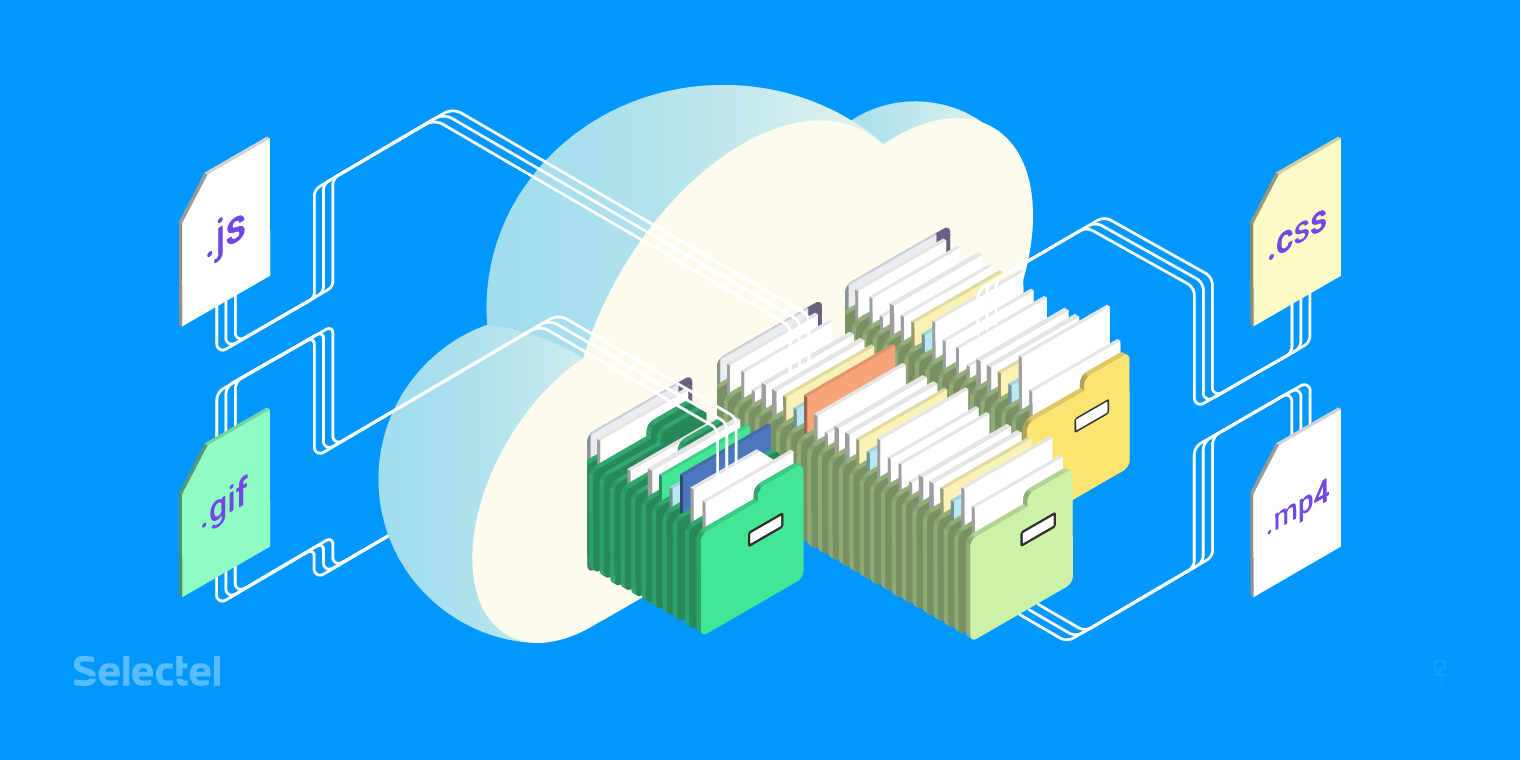Cloud Storage Updates
 Are you ready for some big news? Cloud Storage has been fully updated and in some cases, service prices have been reduced threefold!
Are you ready for some big news? Cloud Storage has been fully updated and in some cases, service prices have been reduced threefold!
Selectel Cloud Storage is most commonly used for:
- Storing backups and archives
- Distributing static content for online applications and sites
- Hosting static sites
- Sharing media with other users
Control Panel Updates
The beta version of our new Cloud Storage interface was launched in March 2017. This new and improved version is now fully available to all of our clients.
The interface in the new control panel was totally redone:

For detailed instructions on how to use Cloud Storage in the updated panel, please visit our knowledge base.
Architecture
This year we expanded our pool of Cloud Storage servers and have overhauled their software and hardware.
Some stats:
- At the start of 2017, we expanded our storage volume by 1817 TB
- Cloud Storage currently serves up to 7 thousand requests per second (not including CDN requests) and this number is constantly rising
The Cloud Storage architecture was redone using the same principles that are behind the Virtual Private Cloud.
Software
A large part of the software serving Cloud Storage was rewritten in Go as part of the Hummingbird project. If you’re unfamiliar with Hummingbird, you can look at this post from our blog.
Thanks to these improvements, storage works much faster and with more stability than before.
Hardware
In addition to the software, we’ve completely updated our server and network infrastructure for the service:
- Storage now includes several tiers for storing hot data
- Smaller files that are frequently accessed are automatically moved to servers with SSDs; this maximizes read speeds for bigger files on traditional hard disks
- To optimize response times when distributing hot data, we now use high-speed and wear-resistant Intel P3700 SSDs with NVMe
- Each caching server is equipped with two 40 GE network interfaces
- Storage servers are connected to the network with two 10 GE interfaces, which will soon be replaced with 25 GE interfaces
- The Cloud Storage network kernel has been updated and uses 40 GE switches
Benefits
- Increased storage reliability
- Accelerated data access
- Improved API performance
Price Changes
We reviewed our pricing plan and made the service more attractive than ever.
Firstly, the more clients use, the more they benefit. They can save up to three times more compared to the previous pricing plan.
Even clients who don’t use many resources will benefit.
The new prices came into effect for Selectel Cloud Storage on October 23, 2017, with discounts relative to the number of resources used and incoming requests.
We’d like to highlight the fact that Cloud Storage traffic within the Selectel network is now completely free. You can use storage to make backups of your dedicated servers and internal archives without worrying about the traffic this generates.
New prices relative to usage:
| Resource Consumption per month | 1 TB | 10 TB | 100 TB | 1000 TB | Over 1000 TB |
|
Data Storage, ₽/GB per month |
1.4 | 1.3 | 1.2 | 1 | 1 |
|
Outgoing Storage Traffic, ₽/GB |
1 | 1 | 0.9 | 0.8 | 0.7 |
|
Outgoing CDN Traffic, ₽/GB |
1.2 | 1.2 | 1.1 | 1 | 0.9 |
Cost of storage and CDN requests:
| Request | GET | HEAD | PUT | POST | DELETE |
| Storage Requests | ₽ 0.024/1000 | ₽ 0.024/1000 | ₽ 0.30/1000 | ₽ 0.30/1000 | Free |
| CDN Requests | Free | Free | ₽ 0.30/1000 | ₽ 0.30/1000 | Free |
Requests are charged regardless of the response code.
Tips for Optimization
Since we’ve changed our billing terms and conditions, below are a few recommendations for optimizing Cloud Storage and streamlining costs.
Delete Files
If you make frequent updates in Cloud Storage, you may end up with outdated files, broken links, etc.
We recommend periodically checking your containers’ contents for these. You can do this by requesting a storage log in the control panel and reviewing the breakdown by type and response code.
Delete links to missing files which are frequently queued according to the results.
If necessary, fix errors in your software code and/or update to the latest versions.
Synchronization
Tools with synchronization functions may create heavy workloads for Storage. They work by building a partial or full index of files on the server and then calculating the difference between that and the index in the local catalog. Indexing for storage is often performed by sending numerous HEAD requests.
We recommend cutting back how often synchronization occurs and if possible, caching the status on a separate server.
Smaller Static Files
Distributing many smaller static files generates a lot of requests and may noticeably increase expenses for storage.
You can optimize expenses in one of the following ways:
- Use the CDN to distribute smaller files: traffic is a bit more expensive, but requests are free
- Combine files that are requested in tandem (JSS, CSS, etc.) into one. This can be done with tools like grunt or packer, and plugins and integrated environments already exist for popular CMS and CRMs, which can be easily found from a search engine or in the relevant documentation
Future Plans
We’ve put a lot of work into improving our service and will continue to make our service even better and easier to use.
Our plans for the near future include:
- Integration with VPC projects
- Detailed container statistics
- Storage pools in Moscow
- Launching storage for cold data
If you have any ideas for Cloud Storage, please share them in the comments below.
We’d be happy to hear your comments and suggestions!